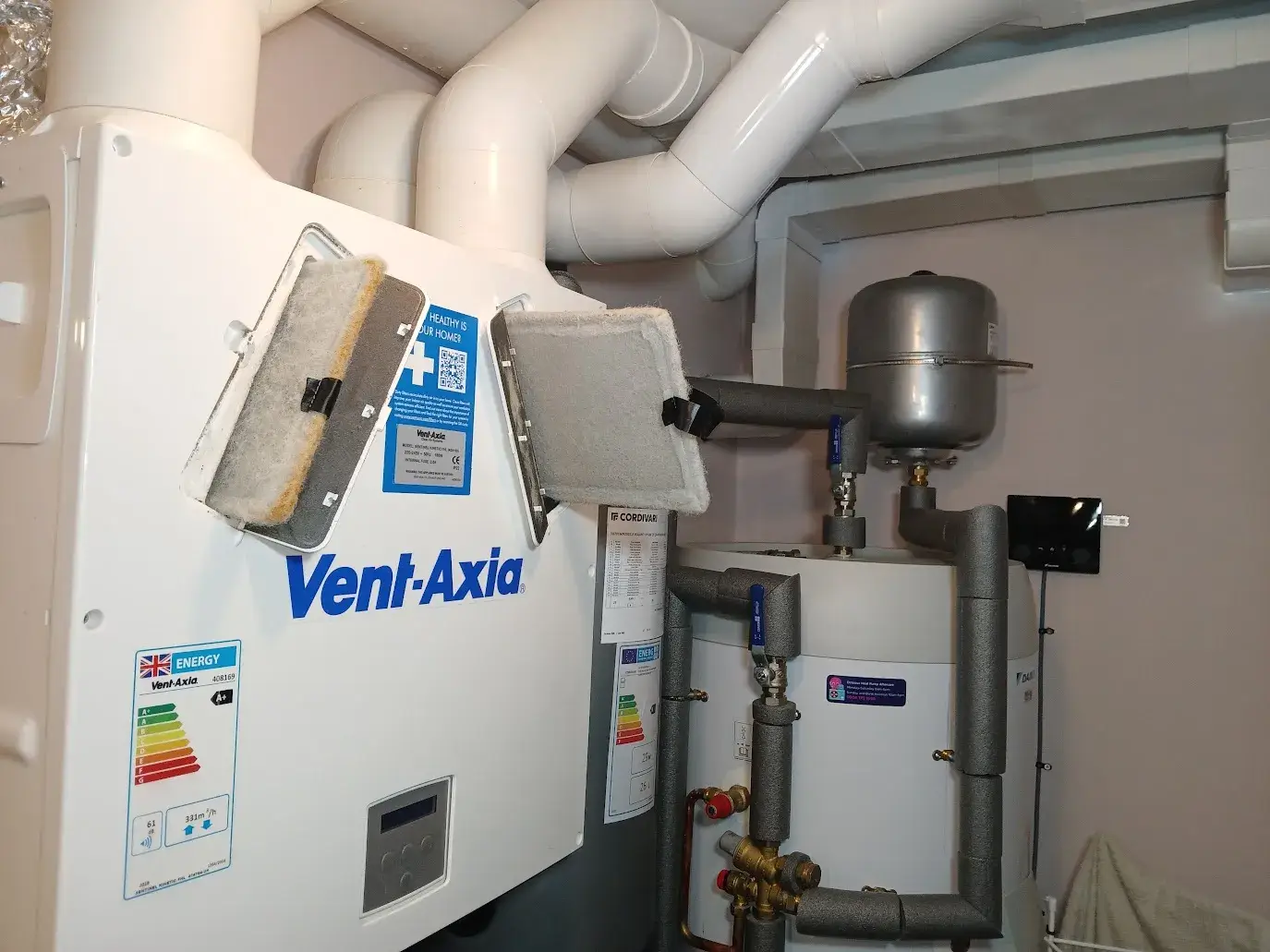
MVHR Issues and Solutions in New-Build Flats Across South East England
MVHR Issues and Solutions in New-Build Flats Across South East England
MVHR Issues and Solutions in New-Build Flats – Shoreham-by-Sea Homeowners’ Guide
Why MVHR Systems Fail in New Developments
Modern new-build flats in Shoreham-by-Sea and across South East England are often equipped with Mechanical Ventilation with Heat Recovery (MVHR) systems to improve energy efficiency. Roughly a quarter of new UK homes now include MVHR for airtight construction.
However, real-world experience shows that these systems can suffer from recurring issues if not installed and maintained correctly. Studies by bodies like NHBC have revealed widespread problems with MVHR in new homes, prompting new technical standards.
This post explores the most frequent MVHR issues seen in new-build flats around Shoreham-by-Sea, how they impact comfort and performance, and how professionals resolve them.
Common MVHR Problems in New-Build Properties
Even in brand-new flats, MVHR units can run into trouble during or after installation. Here are the recurring problems local homeowners often face:
Missing or Clogged Filters
In some new builds, MVHR filters have been left out entirely or never checked. A missing filter means dust and debris get sucked straight into the heat exchanger and ducts. One housing association flat discovered its MVHR unit was “completely blocked” due to a missing filter, which allowed an excessive buildup of dust that damaged the heat exchanger and clogged the ductwork.
Clogged or absent filters lead to poor air quality and force the system to work harder. Filters are meant to be changed every 6–12 months; if they’re neglected, the system won’t work effectively. Unfortunately, many new owners aren’t told about filter maintenance, so this oversight is common.
Installation Errors & Missing Components
Rushed installations often omit critical pieces. For example, directional baffles or separation plates in combined intake/exhaust grilles might be missing or installed incorrectly, causing stale exhaust air to recirculate into the fresh air supply.
Another frequent issue is missing silencers (attenuators) on ductwork. MVHR systems should include sound-damping silencers to ensure quiet operation, especially near bedrooms. When these components are omitted, residents can be plagued by loud airflow noise.
Excessive Fan Speed and Noise
Noise is the number one post-installation complaint about MVHR systems. In many new flats, the fans are left running at an overly high speed or “boost” mode continuously – sometimes due to incorrect commissioning or a one-size-fits-all factory setting.
High fan speeds create multiple problems: the unit’s motor hum becomes audible, air whooshes loudly through ducts, and vents may whistle or howl. When air moves too fast through undersized or bendy ducts, turbulent noise results.
A well-installed system should be barely audible, around 25–30 dB(A) in living areas. Poor acoustic design often means missing flexible anti-vibration mounts or padded brackets, contributing to noise levels that residents find unacceptable.
Poor Airflow or Imbalanced Ventilation
Many MVHR systems don’t seem to ventilate properly. Perhaps the bathroom stays muggy or cooking smells linger despite the system running. Often this traces back to lack of commissioning.
A study of 90 new UK homes found a “lack of commissioning of systems, and insufficient flow rates in fans”, with only 3 homes actually meeting ventilation regulations out of the box. If each room isn’t balanced for the right extract or supply rate, some areas will get too little fresh air while others might get excessive air causing draughts.
Signs of poor airflow include condensation on windows, stagnant air, or even mold growth in corners due to excess humidity.
Maintenance Oversights
MVHR is not a “fit and forget” system; it requires basic upkeep. Yet many new-build flats change hands without occupants being instructed on MVHR operation and maintenance.
An NHBC review found that 9 out of 10 MVHR units required recommissioning or even replacement after roughly one year of occupancy. Without follow-up maintenance, small issues like partially blocked condensate drains or clogged intake grilles go unaddressed and turn into big problems.
Real Customer Experiences
Nothing illustrates these issues better than hearing from homeowners and residents themselves:
“Tim not only serviced my ventilation system but also addressed a number of original installation errors. Truly going above and beyond.” — John Wilkes, Shoreham-by-Sea
One Shoreham-by-Sea homeowner’s review described how their ventilation system had several “original installation errors” left by developers. During a service visit, the technician not only performed routine MVHR maintenance but fixed those installation mistakes, vastly improving the system’s performance.
In another case, a London housing block tenant experienced persistent ventilation failures for years. When inspectors finally opened up the MVHR, they found the intake filter was never fitted. The unit had been running unprotected, until dust clogged the heat exchanger completely. The entire system had to be overhauled and ductwork replaced due to that one missing component.
“He installed air conditioning in a much-needed space and went above and beyond what I was expecting…” — David Hagon, Sussex
Noise complaints also frequently appear in reviews. One new flat owner in Sussex was initially impressed with their MVHR’s fresh air, until they noticed a constant high-pitched hum at night. Upon investigation, the issues were typical: the unit was mounted directly to timber with no vibration isolation, a supply duct ran above the bedroom ceiling at high speed, and no silencers were fitted.
These installation faults meant the system that should have been silent was instead as annoying as a “dripping tap.” Only after a retrofit – adding rubber anti-vibration mounts, re-routing and insulating the duct, and installing proper silencers – did the bedroom become quiet and comfortable.
Professional MVHR Solutions
Given the variety of MVHR troubles that can crop up, professional intervention is often the fastest way to set things right. Here’s how experienced MVHR engineers typically solve these common issues:
Comprehensive System Audit
An expert will start by thoroughly inspecting the entire MVHR setup. This means checking every vent, filter, duct run, and control setting against what should have been installed. Often, they’ll spot things like a closed damper, a crushed duct behind a wall panel, or a missing gasket that’s causing leaks.
Identifying installation errors – loose connections, unsealed ducts, electrical faults – is the first step. In the Shoreham homeowner’s case above, a skilled technician systematically went through the system and caught the installation errors that had been limiting performance.
Cleaning and Filter Replacement
One of the simplest but most impactful fixes is to clean the system. Technicians will replace or wash the filters using the correct grade recommended by the manufacturer and vacuum out any accumulated construction dust or debris.
If a system has been running with clogged filters or no filter, professionals may also clean the heat exchanger core with care. Any blocked external grilles will be cleared as well. Restoring proper filtration and clear airflow paths immediately boosts air quality and prevents strain on the fan.
Balancing and Commissioning
Perhaps the most crucial expert task is to commission or recommission the MVHR system properly. This involves measuring airflow at each supply and extract vent, then adjusting the system to deliver the right volumes to each room.
Professionals use anemometers or airflow meters to ensure, for example, your bathroom is getting 8–15 L/s of extract and your bedroom maybe 5–8 L/s of supply. If the initial install skipped this step, an expert will methodically set the fan speeds and tweak each valve.
Importantly, they will set the total airflow at the unit first instead of just choking vents. Reducing an overpowered fan to the appropriate level ensures the unit isn’t overworking. After that, each room valve is balanced to share that total flow according to needs.
The result is consistent, even ventilation with no more one room howling with air and another feeling stuffy. Proper commissioning also usually reduces noise, since the system can run at a lower, steadier speed once balanced.
Noise Reduction Measures
For MVHR systems troubled by noise, professionals have a toolkit of solutions. First, if silencers (sound attenuators) were not installed, they will add them into the supply and extract ducts near the unit and before the ducts enter habitable rooms.
Secondly, the unit’s mounting is addressed – engineers will fit anti-vibration pads or brackets if the fan unit is rattling against a wall or joist. Ductwork might be re-routed or replaced: for example, swapping a flimsy flexible duct that amplifies noise with a rigid, smooth duct can cut down air noise.
The goal is to get the system running quietly in the background – ideally below 30 dB(A) which is about a whisper. Achieving this often transforms the homeowner’s experience of MVHR from “that loud fan in the cupboard” to not noticing it at all.
Component Replacement and Upgrades
If an investigation finds that a component has failed or was undersized for the flat, a professional will replace it. For instance, a fan motor that’s developed a fault can be swapped out. Sometimes new-build installations used cheaper parts, so an upgrade to a sturdier duct or a higher-grade filter might be recommended.
Experts might also fit missing features: installing a proper combined intake/exhaust grille with a divider plate if the original setup is recirculating air, or adding a condensate drain trap if one wasn’t fitted. These interventions bring the system up to the standard it should have been.
Frequently Asked Questions About MVHR Issues
Why do new-build MVHR systems have so many problems?
New-build MVHR systems often suffer from rushed installation, lack of commissioning, and inadequate maintenance instructions. Developers may prioritize speed over quality, leading to missing components, incorrect settings, and poor balancing that only becomes apparent after occupancy.
How can I tell if my MVHR system needs professional attention?
Warning signs include persistent noise, condensation on windows, stuffy air despite the system running, visible mold growth, or unusually high humidity levels. If you notice any of these issues, contact a qualified MVHR specialist for assessment.
How much does MVHR repair and commissioning cost?
Basic service and rebalancing typically costs £200–£400. More extensive repairs involving component replacement or system upgrades can range from £500–£1,500 depending on the issues found. Contact us for a detailed assessment.
Can MVHR problems affect my health?
Yes, poorly functioning MVHR systems can lead to poor indoor air quality, excess humidity causing mold growth, and inadequate ventilation. These issues can exacerbate respiratory conditions and create uncomfortable living environments.
How often should MVHR systems be serviced?
MVHR systems should be serviced annually, with filter changes every 3–6 months. New installations should be checked after 12 months to catch any commissioning issues or component failures that may have developed.
Project Gallery
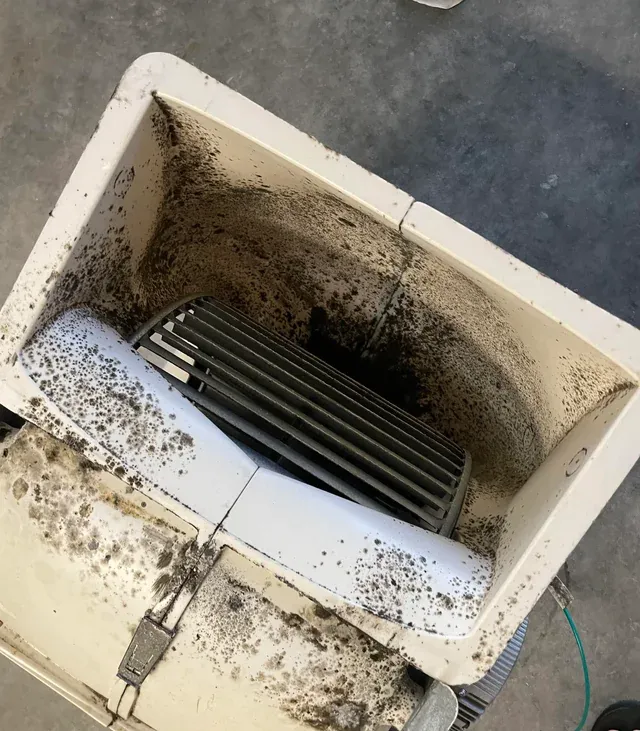
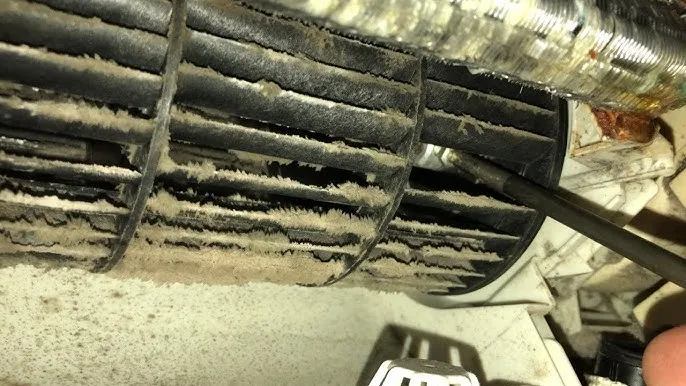
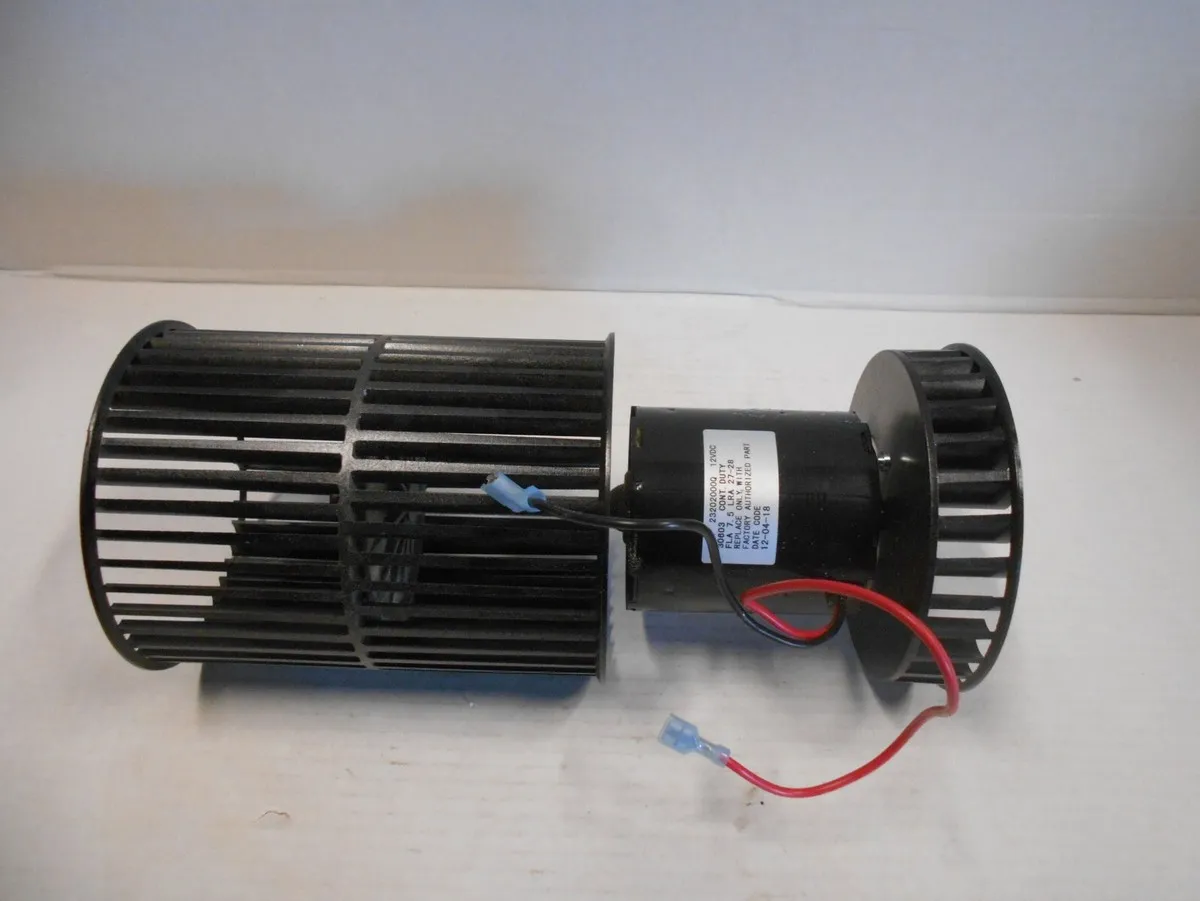
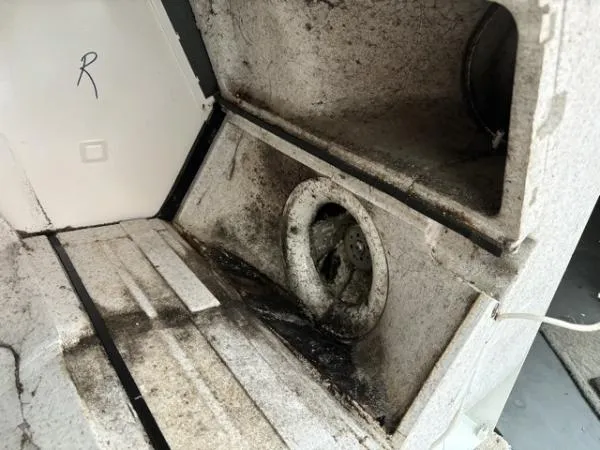
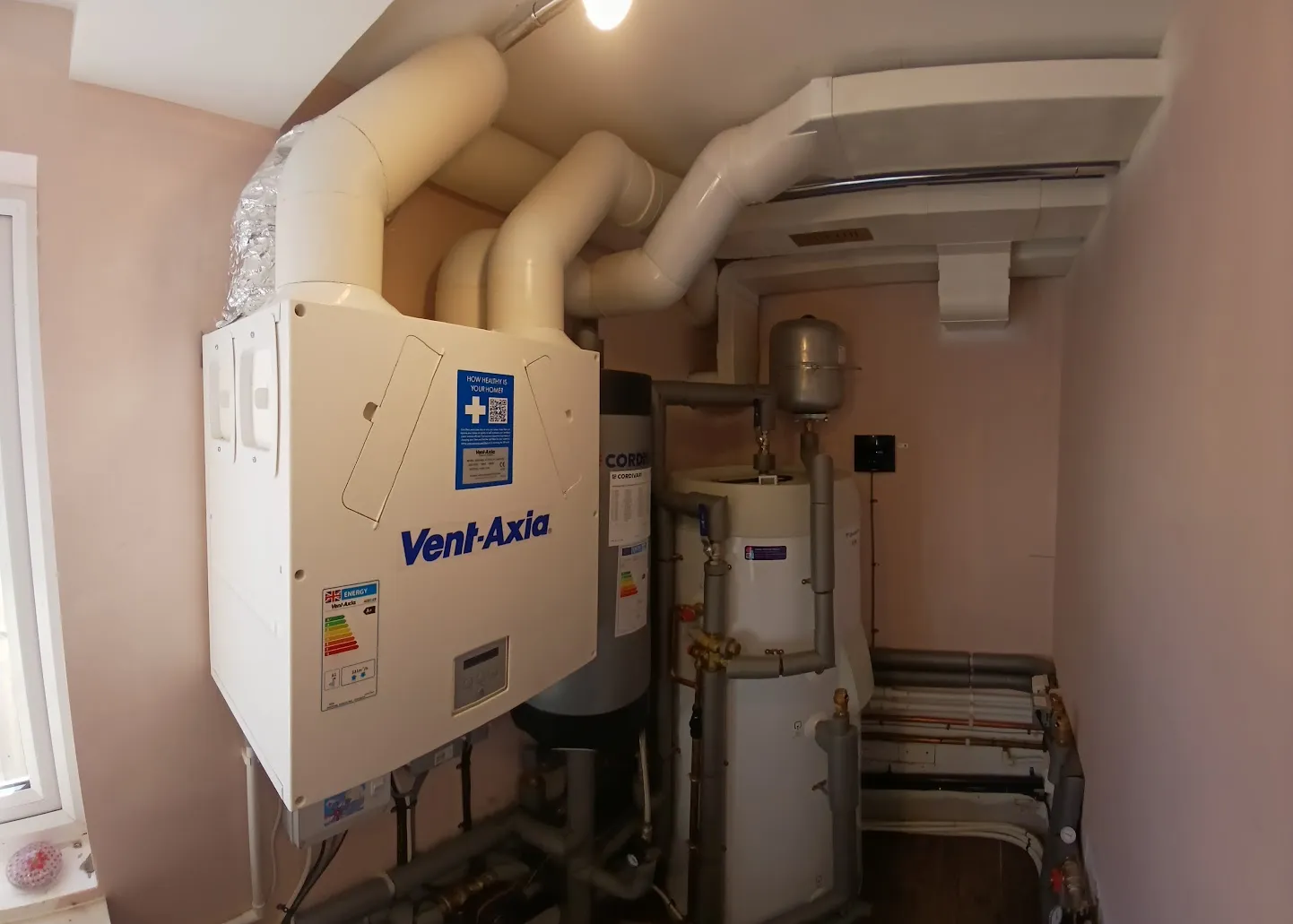
Professional MVHR Solutions for Sussex Homeowners
MVHR systems in today’s new-build flats are fantastic technology when they work correctly. They quietly provide fresh, filtered air while retaining heat, which is invaluable in airtight modern construction. However, as seen in many Shoreham-by-Sea area developments, installation shortcuts or maintenance lapses can lead to frustrating issues.
Noisy fans, weak airflow, or mysterious faults are not things you simply have to “live with.” With proper design, installation and upkeep, these problems are entirely solvable. When an MVHR system is set up and running as intended, homeowners often forget it’s there – except for enjoying cleaner air and zero condensation on windows.
For any new-build flat owner facing MVHR headaches, the key takeaway is to not give up on the system. Instead, seek out qualified ventilation professionals who can diagnose and remedy the root cause. Many local homeowners have seen their air quality and comfort dramatically improve after a thorough service visit.
A well-balanced ventilation system will also complement your air conditioning or heating; by keeping indoor air fresh and dry, MVHR actually helps your AC cool more efficiently and your home feel more comfortable year-round.
If you’re experiencing MVHR issues in your Shoreham-by-Sea property or surrounding areas, contact Ernest Air Cooling for professional assessment and solutions.
Planning Your MVHR Service in Sussex?
Speak to Tim Brooks at Ernest Air Cooling to diagnose and resolve your MVHR issues. Our expert team specializes in delivering quiet, efficient ventilation that protects both your investment and your well-being.